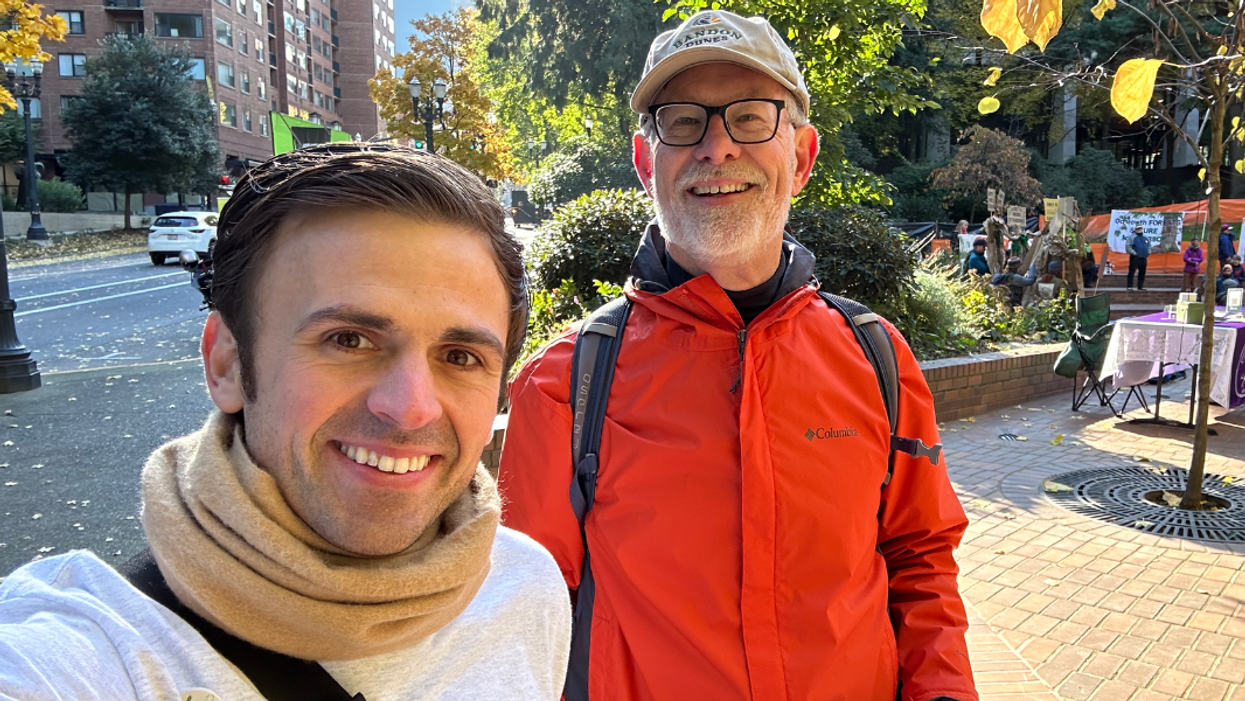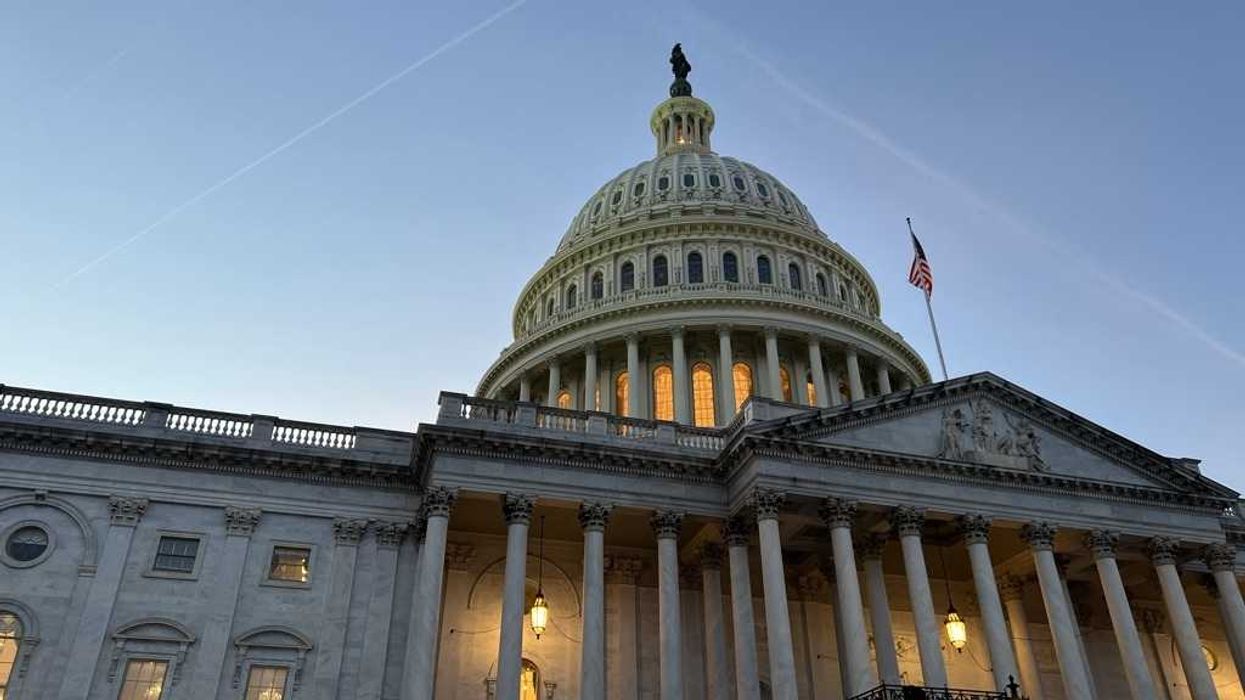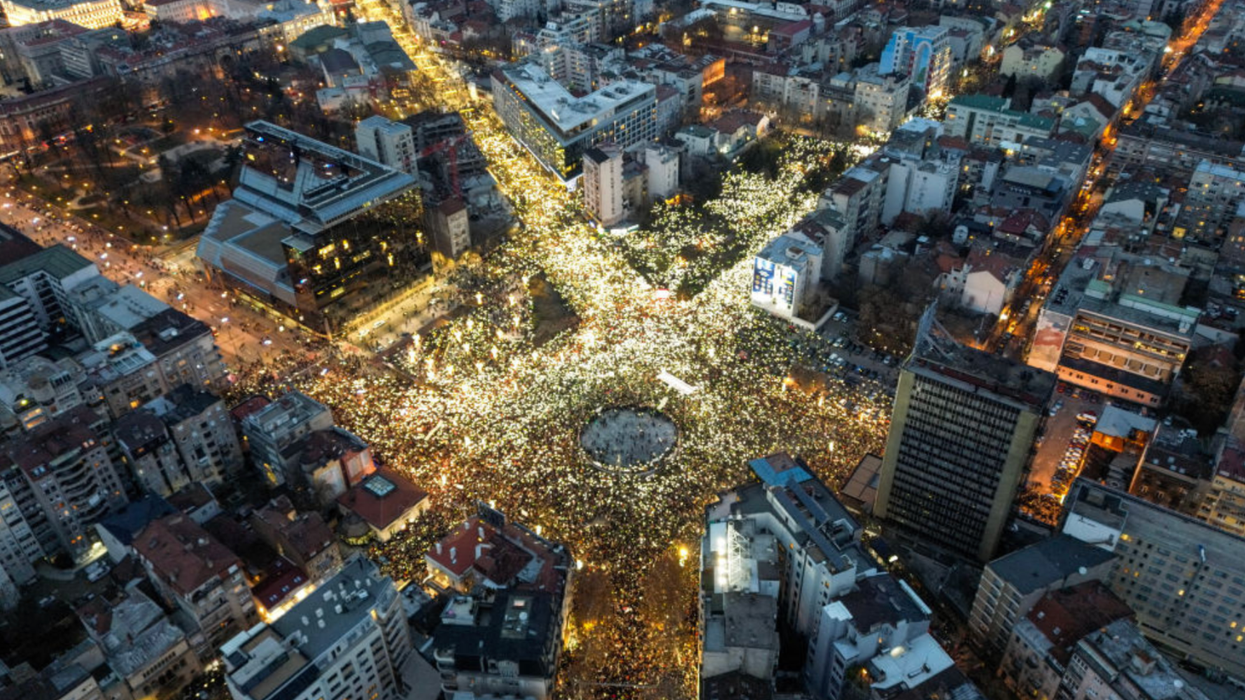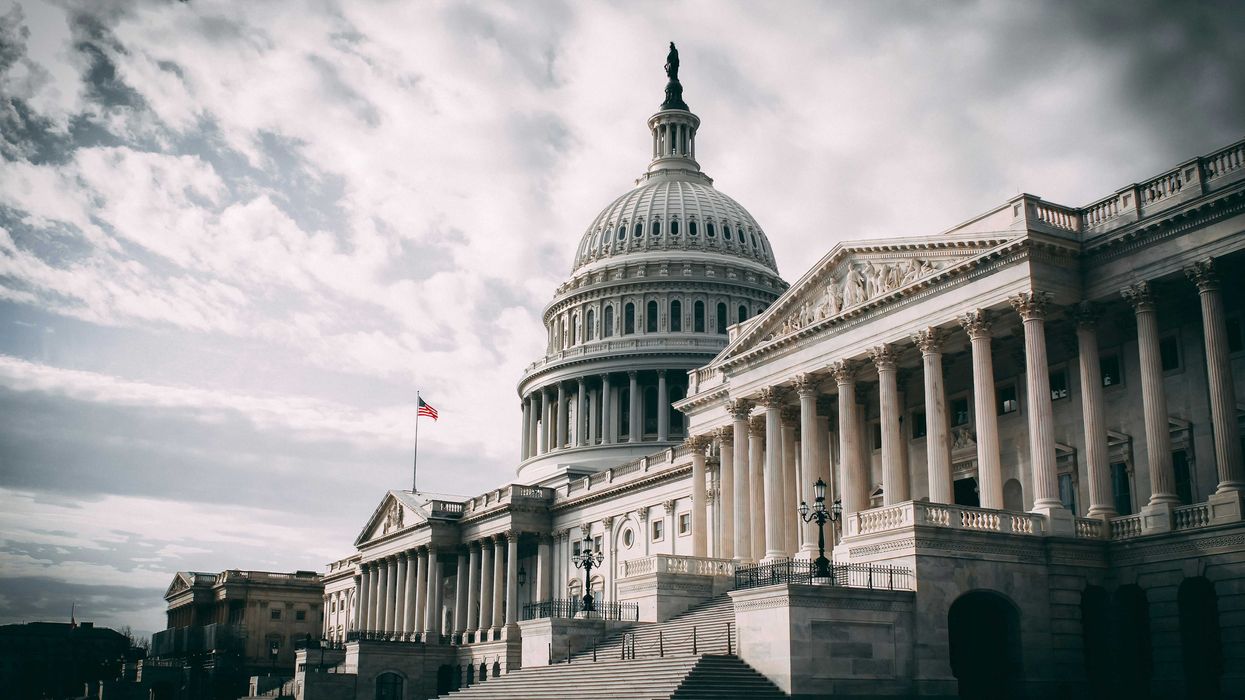Since organizing the Voters Not Politicians 2018 ballot initiative that put citizens in charge of drawing Michigan's legislative maps, Fahey has been the founding executive director of The People, which is forming statewide networks to promote government accountability. She regularly interviews colleagues in the world of democracy reform for our Opinion section.
Michael Calcagno is director of All Oregon Votes, a nonpartisan, statewide team of volunteers that is sponsoring a ballot initiative to enact a constitutional right that ensures all eligible voters and all qualified candidates may participate equally in all elections, both general and primaries.
Our conversation has been edited for clarity and brevity.
Fahey: Tell us about your background. What led you to get involved with All Oregon Votes?
Calcagno: I am an Oregonian with a background in journalism and reporting. In 2015 I was elected to serve on our local community college board. Initially my motivation was to address economic inequality, but after serving on the board I wanted to have a greater impact on broader issues, so I ran for state legislature as an Independent candidate. I realized that Independents are second-class citizens in the voting arena, and we need to do something about it.
Fahey: What, specifically, is All Oregon Votes advocating for?
Calcagno: It is a grassroots campaign designed to end closed primaries. The exclusion of Independent voters from public elections is abhorrent and erodes faith in our election system and government. Our measure will ensure that in every state election, Independent voters would have equal opportunities to vote.
Fahey: Briefly tell us about the current system of closed primaries in your state and how it impacts independent voters.
Calcagno: In Oregon we conduct a closed party primary that advances only one Republican and one Democrat. There are 3 million voters in Oregon, and 1.3 million (42% of the electorate) are not a member of either major party. The single largest voting block is restricted from voting rights.
Fahey: Would the proposed change impact all primaries in Oregon?
Calcagno: Our current language applies to Congressional and state legislature; it would not include presidential primaries.
Fahey: What is the plan for changing this law, and what step are you at in the process?
Calcagno: We determined that the best path forward is proposing a ballot initiative for a constitutional amendment that repeals the closed partisan primary. We feel this is best done through a public process to charge the state legislature with developing a new framework for primaries. Our constitutional amendment, titled IP-16, is a 5-sentence declaration of rights that states that all voters should have an equal opportunity to vote, with equal access to all candidates.
We gathered our first wave of signatures which triggered the Attorney General to write our ballot title, so in November 2024 voters will see a 15-word caption on their ballot. We think the current caption could be more clear and accurate, so we petitioned the state supreme court to allow a modified ballot title. The court dismissed our appeal and so we have filed a fresh initiative, IP-26, with a modified legal approach to achieve the same goal. We need to collect 161,000 valid signatures by July 2024.
Fahey: Does this initiative strengthen the ideals of democracy?
Calcagno: Absolutely! This amazing country we call home is a representative democracy. It is vitally important that every citizen has an equal right to vote, honoring the shared value of American democracy we all hold dear.
Fahey: What proportion of Oregonians support this reform?
Calcagno: In December 2022 a poll was conducted by the research group Oregon Values and Beliefs Center (OVBC). They found that just 23% of Oregon voters want to keep the primary closed with 59% believing the primary should be open. We still need to poll on our ballot caption title, to test the exact language with likely voters.
Fahey: Has this issue been addressed in the past and if so, how? How does your approach differ from previous efforts?
Calcagno: In 2008 and 2014 there were statewide ballot measures for statutory initiatives enacting a top-two primary, and both times they were defeated, as some believed this framework reinforces a two-party duopoly. This time we asked for a general statement of principle that is hard to oppose, rather than prescribing a detailed solution, and timing with voters is better.
Fahey: Since this bill would leave the specifics of how primaries would change to the legislature, are you hearing any concerns about how they would act?
Calcagno: Some concerns have been voiced that the legislature is a partisan body, and therefore may not act in good faith. The ability for constituents to provide input to their lawmakers is a fundamental part of our democracy, and I believe lawmakers will honor the will of the people.
Fahey: Who are the main opponents of your effort and what are their arguments against it? Calcagno: We have not seen any opposition, though it is early in the cycle. Fahey: What do you currently need the most help with and how can people get involved?
Calcagno: We will be scaling up soon, and need volunteer help in all areas: fundraising, research, messaging, signature gathering, social media/marketing and events. To learn more, access our website at All Oregon Votes; to volunteer send an email to info@AllOregonVotes.org.
Fahey: Could there be unintended consequences to allowing non-affiliated voters to participate in primary elections (ie. spoiler effect, non-party infiltration)?
Calcagno: I do not see how enfranchising voters could be a negative. When candidates appeal to a broader cross section of voters, there is more common sense policy making. The spoiler effect is a problem that needs a solution, but continuing to restrict voting rights is not a logical way to address vote-splitting.
We know that 75% of Oregonians are worried about their future, and feel our system of democracy is in peril, which is incredibly profound. In order to solve problems in a sustainable way, we need to go upstream and address the dysfunction in our governance structure.
Fahey: If you were speaking with a high school student or a new immigrant to our country, how would you describe what being an American means to you?
Calcagno: My grandfather was the child of Italian immigrants who came to America in search of a better life. Before they emigrated to America in the early 20th century, Oregon had approved the right of the citizen petition, so they came from a monarchy-based feudal system in Italy into a democratic system where citizens were empowered to directly enact their own laws. Free elections are among the reasons that immigrants continue to come here, and it is vital that we take action to ensure that they endure.
As President Dwight D. Eisehower famously stated, “Politics ought to be the part-time profession of every citizen who would protect the rights and privileges of free people and who would preserve what is good and fruitful in our national heritage” and, “Politics is a profession; a serious, complicated and, in its true sense, a noble one.”






















